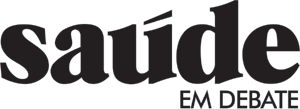ABSTRACT
The Oral Health care network (OH) has expanded with the National Oral Health Policy, and the indicators are tools to assess achievements or the need for changes. This study aimed to analyze the OH indicators of Primary Care Basic by health units organization type in Recife, 2018. This is a cross-sectional, quantitative, descriptive and analytical study, based on secondary data. The association between organization type of Primary Care (Family Health Unity/USF; Upinha and Traditional Basic Health Unit/UBT) and OH assistance indicators was analyzed using the chi-square and Kruskal-Wallis tests (p<0,05). The first dental appointment coverage and the average number of procedures per capita showed a higher median in the UBT, 31,8% (p=0,00) and 0,6 (p=0,127), respectively. The tooth extraction proportion was higher in the USF, with a median of 8,2% (p=0,703). The USF were the ones that performed the largest number of collective activities of supervised tooth brushing (45.3%, p=0.082) and fluoride application (44.6%, p=0.174). It is concluded that the UBT showed better results in the indicators related to access to clinical treatment and the USF performed more collective activities.
KEYWORDS
Primary Health Care; Oral health; Healthcare models
